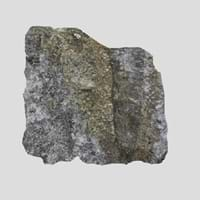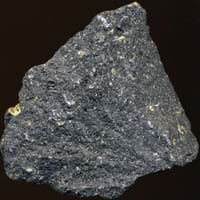Definition
Marl is an unconsolidated sedimentary rock consisting of clay and lime
Basalt is a common extrusive igneous rock formed by the rapid cooling of basaltic lava exposed at or very near the surface of Earth
Discoverer
Unknown
Georgius Agricola
Etymology
From Old French marle, from Late Latin marglia
From Late Latin Basaltes (variant of basanites ), very hard stone, which was imported from Ancient Greek Basanites
Class
Sedimentary Rocks
Igneous Rocks
Sub-Class
Durable Rock, Soft Rock
Durable Rock, Medium Hardness Rock
Group
Not Applicable
Volcanic
Other Categories
Fine Grained Rock, Opaque Rock
Fine Grained Rock, Opaque Rock
Texture
Earthy
Glassy, Massive, Porphyritic, Scoriaceous, Vesicular
Color
Beige, Brown, Green, Grey, White
Black, Brown, Light to Dark Grey
Durability
Durable
Durable
Appearance
Rough and Dull
Dull and Soft
Interior Uses
Decorative Aggregates, Floor Tiles
Floor Tiles, Homes, Hotels, Kitchens
Exterior Uses
As Building Stone, Roof Tiles
As Building Stone, Paving Stone, Garden Decoration, Office Buildings
Other Architectural Uses
Curbing
Curbing, Whetstones
Construction Industry
Cement Manufacture, Construction Aggregate, for Road Aggregate, Making natural cement, Raw material for the manufacture of mortar
Arrowheads, As Dimension Stone, Cobblestones, Cutting Tool, Rail Track Ballast, Roadstone
Medical Industry
Not Yet Used
Not Yet Used
Antiquity Uses
Artifacts, Jewellery, Sculpture, Small Figurines
Artifacts, Monuments
Commercial Uses
Creating Artwork, Soil Conditioner
An Oil and Gas Reservoir, Commemorative Tablets, Creating Artwork, Used in aquariums
Types
Clay Marl ,Blue Marl, Red Marl, High Bank Marl, Shell Layer Marl, Under Shell Layer Marl, Sand Marl, Green Marl, Grey Marl and Clayey Marl
Alkaline Basalt, Boninite, High Alumina Basalt, Mid Ocean Ridge Basalt (MORB), Tholeiitic Basalt, Basaltic trachyandesite, Mugearite and Shoshonite
Features
Generally rough to touch, Is one of the oldest rock, Splintery, Very fine grained rock
Has High structural resistance against erosion and climate, Very fine grained rock
Archaeological Significance
Monuments
Not Yet Used
Used
Famous Monuments
Not Applicable
Easter Island in the Polynesian Triangle, Pacific Ocean, Gateway of India in Mumbai, India, Gol Gumbaz in Karnataka, India
Famous Sculptures
Data Not Available
Data Not Available
Formation
Marl forms when very fine-grained clay particles are deposited in water which settles at the bottom of water bodies and are compacted by overlying sediment; the water squeezes out and hence forming Marl rock.
Basalt forms when lava reaches the Earth's surface near an active volcano. The temperature of lava is between 1100 to 1250° C when it gets to the surface.
Mineral Content
Calcite, Clay, Dolomite, Gypsum, Micas, Pyrite, Quartz
Olivine, Plagioclase, Pyroxene
Compound Content
Aluminium Oxide, NaCl, CaO, Iron(III) Oxide, Silicon Dioxide
Aluminium Oxide, CaO, Iron(III) Oxide, FeO, Potassium Oxide, MgO, MnO, Sodium Oxide, Phosphorus Pentoxide, Silicon Dioxide, Titanium Dioxide
Types of Metamorphism
Not Applicable
Contact Metamorphism
Types of Weathering
Biological Weathering, Chemical Weathering
Biological Weathering
Types of Erosion
Chemical Erosion, Coastal Erosion, Water Erosion, Wind Erosion
Not Available
Grain Size
Very fine-grained
Fine Grained
Fracture
Conchoidal
Conchoidal
Streak
White
White to Grey
Porosity
Highly Porous
Less Porous
Luster
Dull
Not Available
Compressive Strength
Not Available
Cleavage
Not Available
Not Available
Specific Gravity
2.2-2.8
2.8-3
Transparency
Opaque
Opaque
Density
2.4-2.8 g/cm3
2.9-3.1 g/cm3
Specific Heat Capacity
Not Available
Resistance
Heat Resistant, Impact Resistant
Heat Resistant, Pressure Resistant, Wear Resistant
Deposits in Eastern Continents
Asia
India, Pakistan, Russia
India, Russia
Africa
Ethiopia, Kenya, Morocco, South Africa
South Africa
Europe
Austria, France, Germany, Greece, Italy, Romania, Scotland, Spain, Switzerland
Iceland
Others
Not Yet Found
Not Yet Found
Deposits in Western Continents
North America
USA
Canada, USA
South America
Colombia, Ecuador, Peru
Brazil
Deposits in Oceania Continent
Australia
New South Wales, Victoria, Western Australia
Not Yet Found
All about Marl and Basalt Properties
Know all about Marl and Basalt properties here. All properties of rocks are important as they define the type of rock and its application. Marl belongs to Sedimentary Rocks while Basalt belongs to Igneous Rocks.Texture of Marl is Earthy whereas that of Basalt is Glassy, Massive, Porphyritic, Scoriaceous, Vesicular. Marl appears Rough and Dull and Basalt appears Dull and Soft. The luster of Marl is dull while that of Basalt is not available. Marl is available in beige, brown, green, grey, white colors whereas Basalt is available in black, brown, light to dark grey colors. The commercial uses of Marl are creating artwork, soil conditioner and that of Basalt are an oil and gas reservoir, commemorative tablets, creating artwork, used in aquariums.










